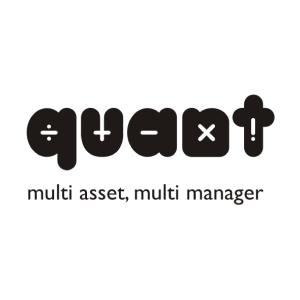Hybrid Mutual Funds
Hybrid funds are a combination of equity and debt investments. The blend of these asset classes varies based on the fund's investment goals.
3 to 5 years
241 Funds
₹9,33,531 Cr Total AUM

Hybrid funds are a combination of equity and debt investments. The blend of these asset classes varies based on the fund's investment goals.
3 to 5 years
241 Funds
₹9,33,531 Cr Total AUM

By Equity-Debt Allocation
By Solutions
Others
Sort By
| Fund name | Fund size | Expense Ratio | 3Y Returns |
|---|---|---|---|
 ICICI Prudential Retirement Fund Pure Equity Plan Direct Growth Retirement Very High Risk | ₹1,589 Cr | 0.68% | 24.5% |
 SBI Magnum Children's Benefit Fund- Investment PLan Direct Growth Children Very High Risk | ₹5,052 Cr | 0.86% | 24.1% |
 Quant Multi Asset Fund Direct Growth Multi Asset Allocation Very High Risk | ₹4,056 Cr | 0.63% | 21.6% |
 ICICI Prudential Retirement Fund Hybrid Aggressive Plan Direct Growth Retirement Very High Risk | ₹1,040 Cr | 0.74% | 21.3% |
 ICICI Prudential India Equity FOF Direct Growth Fund of Funds Very High Risk | ₹248 Cr | 1.17% | 20.9% |
 Nippon India Multi Asset fund Direct Growth Multi Asset Allocation Very High Risk | ₹9,600 Cr | 0.27% | 20.8% |
 UTI Multi Asset Fund Direct Growth Multi Asset Allocation High Risk | ₹6,551 Cr | 0.59% | 20.3% |
 Nippon India Asset Allocator FoF Direct Growth Fund of Funds Very High Risk | ₹1,685 Cr | 0.75% | 20.2% |
 ICICI Prudential Multi-Asset Fund Direct Growth Multi Asset Allocation Very High Risk | ₹71,900 Cr | 0.69% | 19.7% |
 ICICI Prudential Thematic Advantage Fund (FOF) Direct Growth Fund of Funds Very High Risk | ₹8,102 Cr | 0.92% | 19.6% |
Hybrid funds are those that invest in at least two different asset classes to offer diversified investment portfolios. Most hybrid funds feature equity and debt as the asset classes in varying proportions based on the type of hybrid fund.
Most hybrid funds are considered to be moderate risk investments because of considerable allocation to debt or fixed income instruments which have lower risk than equity.
Let’s look at the various aspects of hybrid mutual funds like types of hybrid funds, their advantages and taxation applicable.
In 2017, SEBI recategorised the entire mutual fund universe. Allocation rules were put in place to ensure that mutual fund schemes across categories stayed true to their mandates and there was minimum overlap among different categories. To help investors monitor and manage this, our Portfolio Overlap Tool can be invaluable in identifying and avoiding undue overlap in their mutual fund holdings.
Likewise, hybrid funds were categorised based on two factors:
As the name suggests, conservative hybrid funds take a conservative approach to investing. They are required to invest 75-90% of their assets in debt instruments at all times, with the remaining 10-25% in equity.
As per AMFI: As of Sep 2023, 20 conservative hybrid funds manage about ₹25,000 crore in India.
Balanced hybrid funds invest roughly half of their assets in debt instruments and equity each. As far as the rules go, they are required to invest a minimum of 40% and a maximum of 60% in debt instruments as well as equity at all times.
Note: Balanced hybrid funds are different from balanced advantage funds (discussed below)
Aggressive hybrid funds are equity heavy and suited for investors who have a high risk tolerance. They are required to invest 65-80% of their assets in equity at all times, with the remaining 20-35% in debt instruments.
As per AMFI: As of Sep 2023, 31 balanced and aggressive hybrid funds manage about ₹1.75 lakh crore in assets.
Dynamic asset allocation or balanced advantage funds are among the most popular mutual fund categories in India managing about ₹2.15 lakh crore assets as of Sep 2023.
This is because they do not have any restrictions and are among the most flexible mutual fund categories. Equity as well as debt allocation can be anything from 0-100%.
While other hybrid fund categories have defined equity and debt allocation ranges, multi asset allocation funds are required to invest in a minimum of 3 asset classes with a minimum 10% allocation to each.
This gives multi asset allocation a lot of flexibility as well as the ability to invest in multiple asset classes unlike other hybrid fund categories.
As of Sep 2023, 16 multi asset allocation funds manage just over ₹42,000 crore in assets. Source: AMFI
Equity savings funds are required to invest a minimum of 65% in equity and related instruments and a minimum of 10% in debt instruments.
The unique feature of equity savings funds is that they are required to hedge their equity exposure using derivatives which limits the downside risk. Derivatives are considered to be equity related instruments.
As of Sep 2023, 22 equity savings funds manage about ₹21,000 crore in assets.
Arbitrage funds follow the ‘arbitrage investment strategy’ which involves simultaneous buying and selling of identical securities to generate the price difference as profit.
For example: An arbitrage fund may buy stocks of a certain stock at ₹100 on stock exchange A and sell them simultaneously on stock exchange B at ₹101 to generate the price difference ( ₹1 per stock) as profit.
Arbitrage funds are quite popular because they are low risk-low return instruments and enjoy equity taxation. Equity taxation (10% or 15%) is lower than the marginal income tax rate that is applicable on debt mutual funds and hence preferred by investors in higher income tax brackets (20% and above).
Diversification across asset classes makes your investments stable.
Hybrid funds have in-build diversification because most of them are required to have minimum allocations to equity and debt instruments.
This helps investors and even advisors manage investment portfolios with relative ease while keeping the portfolios simple. This also saves time and effort that goes into selecting the right debt and equity funds to create a well-diversified portfolio.
Note: This advantage applies to equity-oriented (more than 65%) hybrid funds only and assumes investor to be in a higher tax bracket (20%+)
Suppose you want to invest in a mix of debt and equity funds where your target equity allocation is greater than 65%. In this case, you are better off investing in an aggressive hybrid fund or an equity savings fund from the taxation perspective.
This is because equity-oriented hybrid funds enjoy equity taxation despite having a significant debt allocation.
Another advantage is that the asset allocation rebalancing becomes the fund manager’s job and not the investor’s or advisor’s thereby saving time and effort.
While the idea behind hybrid funds is logical, hybrid funds may not suit everyone. This is especially true for categories where asset allocation freedom is high.
For example: Dynamic asset allocation or balanced advantage funds can have any allocation across equity and debt ranging from 0% to 100%. An investor with a low risk appetite might not like it if the fund manager increases the asset allocation of his hybrid fund to, say, 80%.
Further, different hybrid fund managers may resort to different strategies for asset allocation, equity allocation - value investing vs. growth investing, debt allocation - credit risk vs. duration risk. Not all investors may be comfortable with the various strategies followed by a given hybrid fund.
The significant allocation to debt instruments results in hybrid funds generating lower returns than pure equity funds over the long term.
However, the debt allocation also helps cushion the portfolio during times of market crashes which can temporarily wipe out a significant portion if the debt component were absent.
We know that over the long-term, equity tends to generate higher returns than debt instruments. Since hybrid funds invest in a mix of equity and debt, their expected returns are greater than pure debt funds but lower than pure equity funds.
Similarly, in the risk spectrum, hybrid funds fall between pure debt funds and pure equity funds.
Here are the 3, 5 and 10 year average returns of all hybrid fund categories:
| Average Category Returns | 3 Years | 5 Years | 10 Years |
| Aggressive Hybrid Funds | 17.45% | 12.31% | 13.18% |
| Balanced Hybrid Funds | 11.04% | 8.38% | 9.62% |
| Conservative Hybrid Funds | 7.97% | 7.51% | 8.48% |
| Equity Savings Funds | 10.22% | 8.15% | 7.84% |
| Arbitrage Funds | 4.59% | 4.86% | 5.95% |
| Dynamic Asset Allocation Funds | 12.58% | 10% | 10.56% |
| Multi Asset Allocation Funds | 15.17% | 12.10% | 8.76% |
Source: Value Research Online | For periods ending 1 Nov, 2023
Not all hybrid funds are taxed in the same manner.
The tax rate on capital gains arising from hybrid funds depends on the holding period and allocation to domestic equity:
| Equity allocation | Less than 35% | 35-65% | More than 65% |
| Qualifying hybrid subcategories | Conservative hybrid funds, multi asset allocation funds | Balanced hybrid funds | Aggressive hybrid funds, equity savings funds, arbitrage funds |
| Short-term capital gains (STCG) tax rate | Investor’s marginal income tax rate | Investor’s marginal income tax rate | 15% |
| STCG becomes LTCG after | Never | 3 years | 1 year |
| Long-term capital gains (LTCG) tax rate | Same as STCG tax rate | 20% with the benefit of indexation | 10% (first ₹1 lakh is exempt from LTCG per financial year) |
Note: The above is applicable to all investments in hybrid funds after 1 Apr, 2023
Hybrid funds are those that invest in at least two different asset classes to offer diversified investment portfolios. Most hybrid funds feature equity and debt as the asset classes in varying proportions based on the type of hybrid fund.
Most hybrid funds are considered to be moderate risk investments because of considerable allocation to debt or fixed income instruments which have lower risk than equity.
Let’s look at the various aspects of hybrid mutual funds like types of hybrid funds, their advantages and taxation applicable.
In 2017, SEBI recategorised the entire mutual fund universe. Allocation rules were put in place to ensure that mutual fund schemes across categories stayed true to their mandates and there was minimum overlap among different categories. To help investors monitor and manage this, our Portfolio Overlap Tool can be invaluable in identifying and avoiding undue overlap in their mutual fund holdings.
Likewise, hybrid funds were categorised based on two factors:
As the name suggests, conservative hybrid funds take a conservative approach to investing. They are required to invest 75-90% of their assets in debt instruments at all times, with the remaining 10-25% in equity.
As per AMFI: As of Sep 2023, 20 conservative hybrid funds manage about ₹25,000 crore in India.
Balanced hybrid funds invest roughly half of their assets in debt instruments and equity each. As far as the rules go, they are required to invest a minimum of 40% and a maximum of 60% in debt instruments as well as equity at all times.
Note: Balanced hybrid funds are different from balanced advantage funds (discussed below)
Aggressive hybrid funds are equity heavy and suited for investors who have a high risk tolerance. They are required to invest 65-80% of their assets in equity at all times, with the remaining 20-35% in debt instruments.
As per AMFI: As of Sep 2023, 31 balanced and aggressive hybrid funds manage about ₹1.75 lakh crore in assets.
Dynamic asset allocation or balanced advantage funds are among the most popular mutual fund categories in India managing about ₹2.15 lakh crore assets as of Sep 2023.
This is because they do not have any restrictions and are among the most flexible mutual fund categories. Equity as well as debt allocation can be anything from 0-100%.
While other hybrid fund categories have defined equity and debt allocation ranges, multi asset allocation funds are required to invest in a minimum of 3 asset classes with a minimum 10% allocation to each.
This gives multi asset allocation a lot of flexibility as well as the ability to invest in multiple asset classes unlike other hybrid fund categories.
As of Sep 2023, 16 multi asset allocation funds manage just over ₹42,000 crore in assets. Source: AMFI
Equity savings funds are required to invest a minimum of 65% in equity and related instruments and a minimum of 10% in debt instruments.
The unique feature of equity savings funds is that they are required to hedge their equity exposure using derivatives which limits the downside risk. Derivatives are considered to be equity related instruments.
As of Sep 2023, 22 equity savings funds manage about ₹21,000 crore in assets.
Arbitrage funds follow the ‘arbitrage investment strategy’ which involves simultaneous buying and selling of identical securities to generate the price difference as profit.
For example: An arbitrage fund may buy stocks of a certain stock at ₹100 on stock exchange A and sell them simultaneously on stock exchange B at ₹101 to generate the price difference ( ₹1 per stock) as profit.
Arbitrage funds are quite popular because they are low risk-low return instruments and enjoy equity taxation. Equity taxation (10% or 15%) is lower than the marginal income tax rate that is applicable on debt mutual funds and hence preferred by investors in higher income tax brackets (20% and above).
Diversification across asset classes makes your investments stable.
Hybrid funds have in-build diversification because most of them are required to have minimum allocations to equity and debt instruments.
This helps investors and even advisors manage investment portfolios with relative ease while keeping the portfolios simple. This also saves time and effort that goes into selecting the right debt and equity funds to create a well-diversified portfolio.
Note: This advantage applies to equity-oriented (more than 65%) hybrid funds only and assumes investor to be in a higher tax bracket (20%+)
Suppose you want to invest in a mix of debt and equity funds where your target equity allocation is greater than 65%. In this case, you are better off investing in an aggressive hybrid fund or an equity savings fund from the taxation perspective.
This is because equity-oriented hybrid funds enjoy equity taxation despite having a significant debt allocation.
Another advantage is that the asset allocation rebalancing becomes the fund manager’s job and not the investor’s or advisor’s thereby saving time and effort.
While the idea behind hybrid funds is logical, hybrid funds may not suit everyone. This is especially true for categories where asset allocation freedom is high.
For example: Dynamic asset allocation or balanced advantage funds can have any allocation across equity and debt ranging from 0% to 100%. An investor with a low risk appetite might not like it if the fund manager increases the asset allocation of his hybrid fund to, say, 80%.
Further, different hybrid fund managers may resort to different strategies for asset allocation, equity allocation - value investing vs. growth investing, debt allocation - credit risk vs. duration risk. Not all investors may be comfortable with the various strategies followed by a given hybrid fund.
The significant allocation to debt instruments results in hybrid funds generating lower returns than pure equity funds over the long term.
However, the debt allocation also helps cushion the portfolio during times of market crashes which can temporarily wipe out a significant portion if the debt component were absent.
We know that over the long-term, equity tends to generate higher returns than debt instruments. Since hybrid funds invest in a mix of equity and debt, their expected returns are greater than pure debt funds but lower than pure equity funds.
Similarly, in the risk spectrum, hybrid funds fall between pure debt funds and pure equity funds.
Here are the 3, 5 and 10 year average returns of all hybrid fund categories:
| Average Category Returns | 3 Years | 5 Years | 10 Years |
| Aggressive Hybrid Funds | 17.45% | 12.31% | 13.18% |
| Balanced Hybrid Funds | 11.04% | 8.38% | 9.62% |
| Conservative Hybrid Funds | 7.97% | 7.51% | 8.48% |
| Equity Savings Funds | 10.22% | 8.15% | 7.84% |
| Arbitrage Funds | 4.59% | 4.86% | 5.95% |
| Dynamic Asset Allocation Funds | 12.58% | 10% | 10.56% |
| Multi Asset Allocation Funds | 15.17% | 12.10% | 8.76% |
Source: Value Research Online | For periods ending 1 Nov, 2023
Not all hybrid funds are taxed in the same manner.
The tax rate on capital gains arising from hybrid funds depends on the holding period and allocation to domestic equity:
| Equity allocation | Less than 35% | 35-65% | More than 65% |
| Qualifying hybrid subcategories | Conservative hybrid funds, multi asset allocation funds | Balanced hybrid funds | Aggressive hybrid funds, equity savings funds, arbitrage funds |
| Short-term capital gains (STCG) tax rate | Investor’s marginal income tax rate | Investor’s marginal income tax rate | 15% |
| STCG becomes LTCG after | Never | 3 years | 1 year |
| Long-term capital gains (LTCG) tax rate | Same as STCG tax rate | 20% with the benefit of indexation | 10% (first ₹1 lakh is exempt from LTCG per financial year) |
Note: The above is applicable to all investments in hybrid funds after 1 Apr, 2023
Hybrid funds are good, in the sense that they have in-build diversification across asset classes that helps lower the risk of investment. However, suitability of hybrid funds depends on your risk appetite and financial goals.
Hybrid funds are one of the 3 top-level mutual fund categories, the other two being equity funds and debt funds. Balanced funds are a subcategory of hybrid funds which are required to have equity and debt allocation between 40-60% of the assets they manage.
It completely depends on what is important to you. Hybrid funds are better than equity funds from the risk angle. However, over the long term, it has been observed that equity funds perform better than hybrid funds.

Equity funds mainly invest in stocks of different companies, making investors partial owners of those companies when they invest in such funds.

Debt Mutual Funds invest in fixed-income securities such as government bonds, corporate bonds, treasury bills, and other money market instruments.

Download Wealth Monitor App
Track and monitor all
your investments